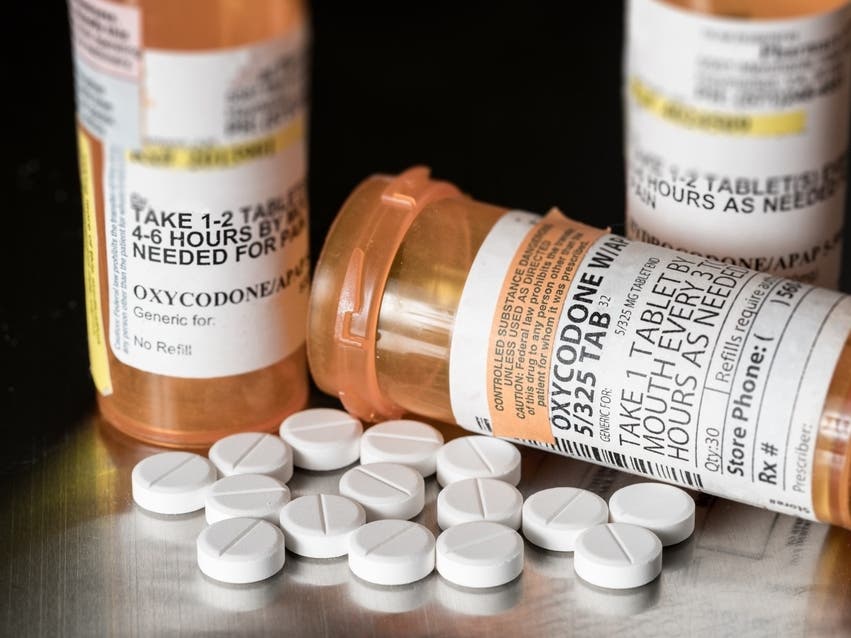Business & Tech
CVS, Walgreens, Walmart Settle Opioid Lawsuits: What It Means In MD
Money to fight opioid abuse is headed to Maryland under an agreement with CVS, Walmart and Walgreens to pay about $10 billion to states.

MARYLAND — More money to fund overdose treatment programs, safe stations and other responses to opioid abuse will soon be headed to Maryland under a tentative agreement Wednesday with CVS and Walgreens to pay about $10 billion to local, state and tribal governments to resolve thousands of lawsuits claiming their pharmacies mishandled prescriptions for opioid painkillers.
Walmart is still negotiating its deal, but Reuters reported the settlement under discussion was in the $4 billion range.
A majority of plaintiffs still must approve the settlements. Walgreens and CVS both agreed to pay about $5 billion each, and Walmart agreed to pay about $3.1 billion, Reuters and The New York Times reported.
Find out what's happening in Across Marylandwith free, real-time updates from Patch.
The tentative agreements reached Nov. 2 could be the last after years of litigation over the drug industry’s role in the opioid overdose crisis that has been linked to more than 500,000 U.S. deaths since 1999, according to Centers for Disease Control and Prevention data.
Maryland Attorney General Brian E. Frosh announced Nov. 7 that all 58 counties and municipalities participating in settlements with drug-maker Johnson & Johnson, and opioid distributors McKesson, Cardinal Health, and Amerisource Bergen will begin receiving their first payments in the coming weeks. Under the settlement agreements, the state and its subdivisions will receive over $60 million in 2022 out of a projected total of more than $395 million over 18 years.
Find out what's happening in Across Marylandwith free, real-time updates from Patch.
“Money alone will not heal the wounds Marylanders have suffered from the opioid epidemic,” Frosh said in a statement, “but these funds will help us prevent more addiction and death. We appreciate the cooperation and hard work that have brought us to this point. I am proud of the work the state and its subdivisions have done in holding wrongdoers accountable and securing this relief for the people of Maryland.”
The attorney general’s formal certification of payment amounts will set in motion the distribution by the end of December of over $13.5 million to subdivision abatement funds. Nearly $47 million will also be distributed to the Maryland Opioids Restitution Fund established by the Maryland General Assembly in 2019 to pay for opioids abatement programs across the state.
All told, nine of the state’s 23 counties are expected to receive total grants or direct payments ranging from $1.3 million to $7.8 million, while smaller counties and municipalities will collectively receive millions more.
Provisional CDC data for 2021 shows opioid overdose deaths increased from an estimated 70,029 in 2020 to 80,816 in 2021. Overdose deaths from synthetic opioids, primarily fentanyl, and psychostimulants such as methamphetamine and cocaine also continued to increase from 2020 to 2021.
More than 2,600 people in Maryland died of drug overdoses in from May 2021 to May 2022, according to the CDC, for a decrease of 8.25 percent. Importantly, the data isn’t sorted by type of drug, but the CDC has said that 82 percent of overdose deaths involve synthetic opioids.
Large prescription opioid manufacturers and the three major drug distribution companies have already settled the lawsuits against them, but retail pharmacies have been slow to strike a deal with the plaintiffs. The plaintiffs argued the pharmacies should have flagged inappropriate prescriptions.
So far, Maryland is set to receive about $395 million in a $26 billion opioids settlement with the nation’s three major pharmaceutical distributors — Cardinal, McKesson, and AmerisourceBergen — and the drug maker Johnson & Johnson. Money began flowing to the state and its local governments in the second quarter of 2022.
Maryland's share of the settlement represents over 90 percent of the state population. The money will be paid over 18 years and spent on opioid crisis abatement throughout the state, including Baltimore City and Anne Arundel, Baltimore, Frederick, Harford, Howard, Montgomery, and Prince George’s counties.
Frosh set forth the distribution process and the certified, final payment amounts to local jurisdictions in a letter and worksheet sent to all participating subdivisions.
Money from the settlement will support overdose-related programs and initiatives administered by local health departments, fund overdose response programs and teams, peer recovery services, and Safe Stations, as well as community and faith-based organizations.
Get more local news delivered straight to your inbox. Sign up for free Patch newsletters and alerts.